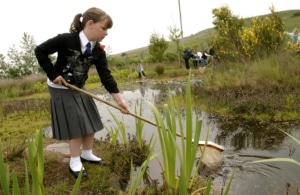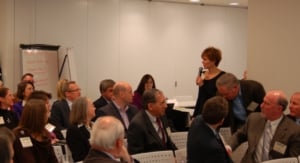The 26th Annual Symposium: The Big Pivot Meets The Corporate Idealist
The Wildlife Habitat Council is a hive of activity at the moment as the final pieces of our 26th Annual Symposium fall into place.
The Symposium is an annual celebration of corporate conservation and represents one of the most optimistic conservation conferences today, thanks to its focus on implementation and its role recognizing hundreds of programs under our certification programs. At this conference, action is honored and outstanding efforts are highlighted through an awards event that includes conservation partners, education efforts, newly certified programs, and long-time practitioners of conservation on corporate lands.
The meeting is designed for anyone interested in implementing conservation on corporate lands or in connecting conservation and related education projects to corporate goals for CSR, sustainability, employee engagement, community outreach, biodiversity, or STEM reasons. Participants learn from each other and network across many industry sectors including mining, building materials, manufacturing, chemicals, and utilities.
This year we are honored to host two fascinating speakers who operate at the intersection of corporations and the planet that hosts them. Each will bring a message to our audience of how we can, and should operate into the future and how conservation on corporate lands becomes an important part of becoming great businesses beyond the bottom line.
Our keynote speaker, Andrew Winston, is author of The Big Pivot and a global business strategist. From his vantage point outside of the corporate structure he has identified three global trends that will challenge businesses but also provide opportunities for companies willing to embrace new ways of participating in the global marketplace. Andrew sees natural resource scarcity, climate uncertainty and calls for transparency as three big issues facing business today and has developed ten strategies that companies should adopt to thrive and survive in this future.
In his earlier work, Green to Gold, Andrew Winston and his co-author, Dan Esty illustrated that in many sectors, companies should report, for a variety of stakeholders and reasons, that they manage environmental and social issues well. In The Big Pivot, he takes this further, showing that a more open world is causing customers and stakeholders to demand to know whether a company is a good actor on issues like climate change, resource use, human rights etc. He also builds a convincing business case for companies to not simply ignore climate uncertainty or resource scarcity but pivot to address the challenges for their own benefit and that of society.
Christine Bader, who will facilitate our plenary panel, brings a complementary but different view point. She speaks from the inside, both from her own experiences working within BP but also from interviews she has conducted with others working inside business to advance programs and projects that have a societal benefit. In The Evolution of a Corporate Idealist, Christine shows how those who work on the inside to promote safe and reasonable practices have much in common with advocates from the outside but who must tread more careful and nuanced paths. She will be joined on stage by three great models of this effort. Bill Cobb from Freeport-McMoRan Inc., Jim Rushworth from Lafarge, and Sheryl Telford from Dupont Company will talk with knowledge and passion about how to build a bridge between idealism and implementation.
Our agenda for Symposium is packed with panels, workshops, awards events and the all-important networking opportunities. Our two speakers will set the tone for two days exploring opportunities to use corporate lands to connect community, engage employees and enhance biodiversity.








